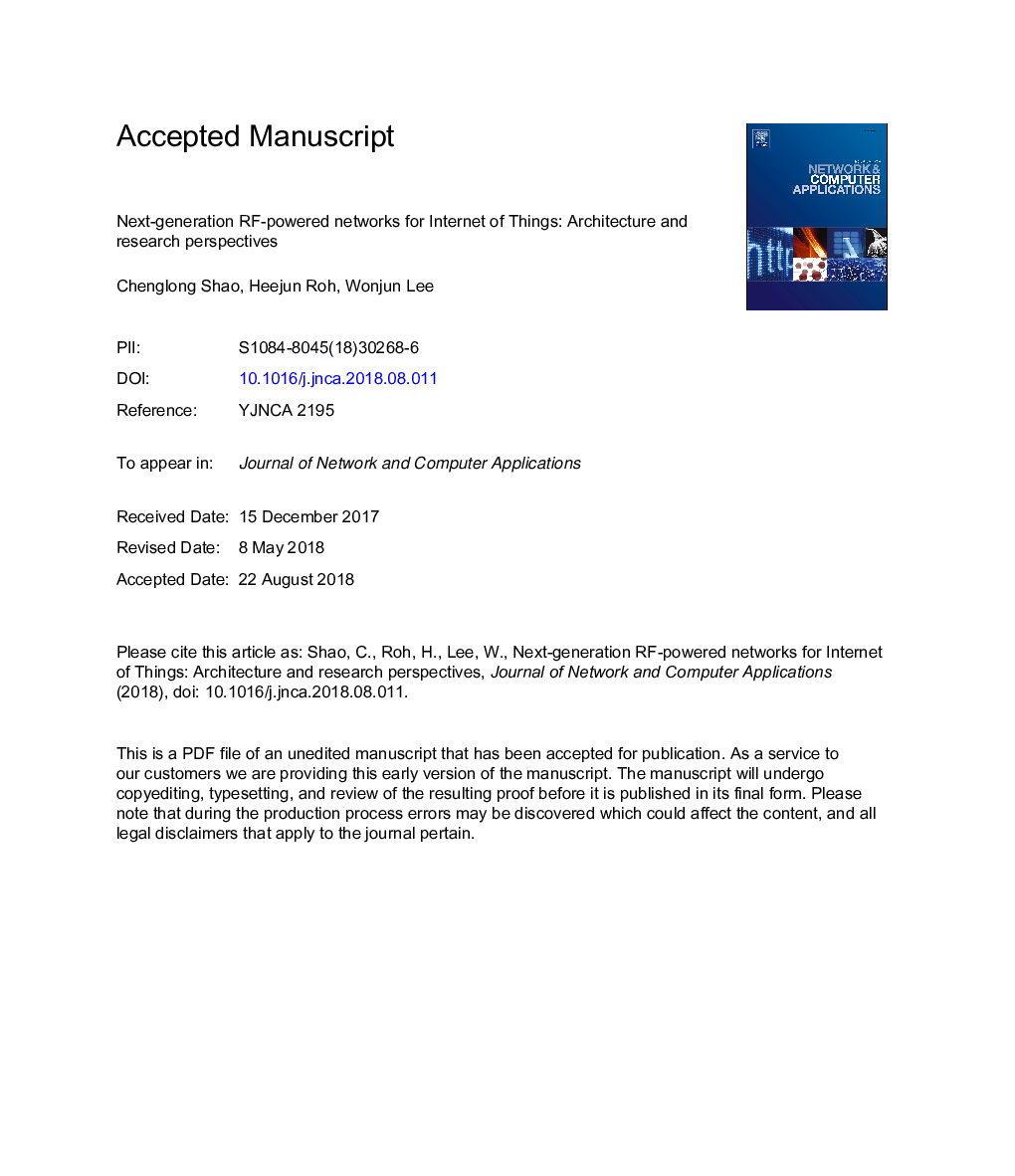| Article ID | Journal | Published Year | Pages | File Type |
|---|---|---|---|---|
| 10151318 | Journal of Network and Computer Applications | 2018 | 12 Pages |
Abstract
Wireless power transfer technique aiming at wireless energy provision has emerged as a prominent solution to the architecture of long-term and self-sustainable wireless systems. Particularly, by integrating this approach with data communication, radio frequency (RF)-powered networks such as radio frequency identification systems have been ubiquitously deployed in recent years and are considered as one of the key components of both the Internet of Things and the Fourth Industrial Revolution. However, the lack of function diversity at end devices makes the conventional RF-powered networks merely support some simple and dull operations. In this context, various types of new devices with more intelligence and the ability of harvesting wireless power have been designed of late. Unfortunately, inevitable energy loss occurring in wireless propagation usually leads to time-consuming power transfer and network throughput degradation. Bearing this in mind, in this paper, we present a blueprint for the construction of next-generation RF-powered networks which intend to provide flexible network functions, prompt wireless power transfer, and high network throughput. Several relevant challenges and opportunities are also provided as a guidance on the formation of this new architecture-based Internet of Things.
Keywords
Related Topics
Physical Sciences and Engineering
Computer Science
Computer Networks and Communications
Authors
Chenglong Shao, Heejun Roh, Wonjun Lee,
